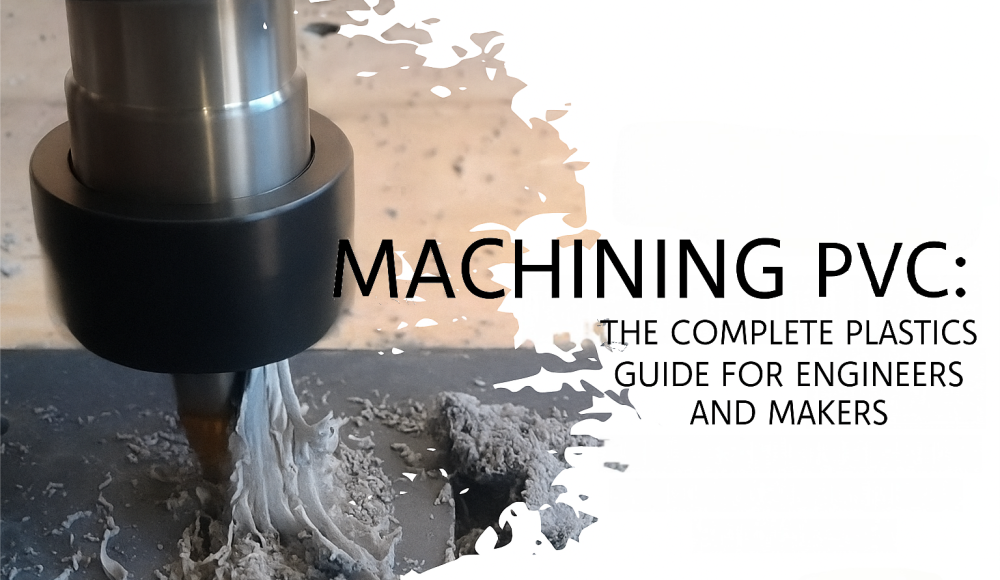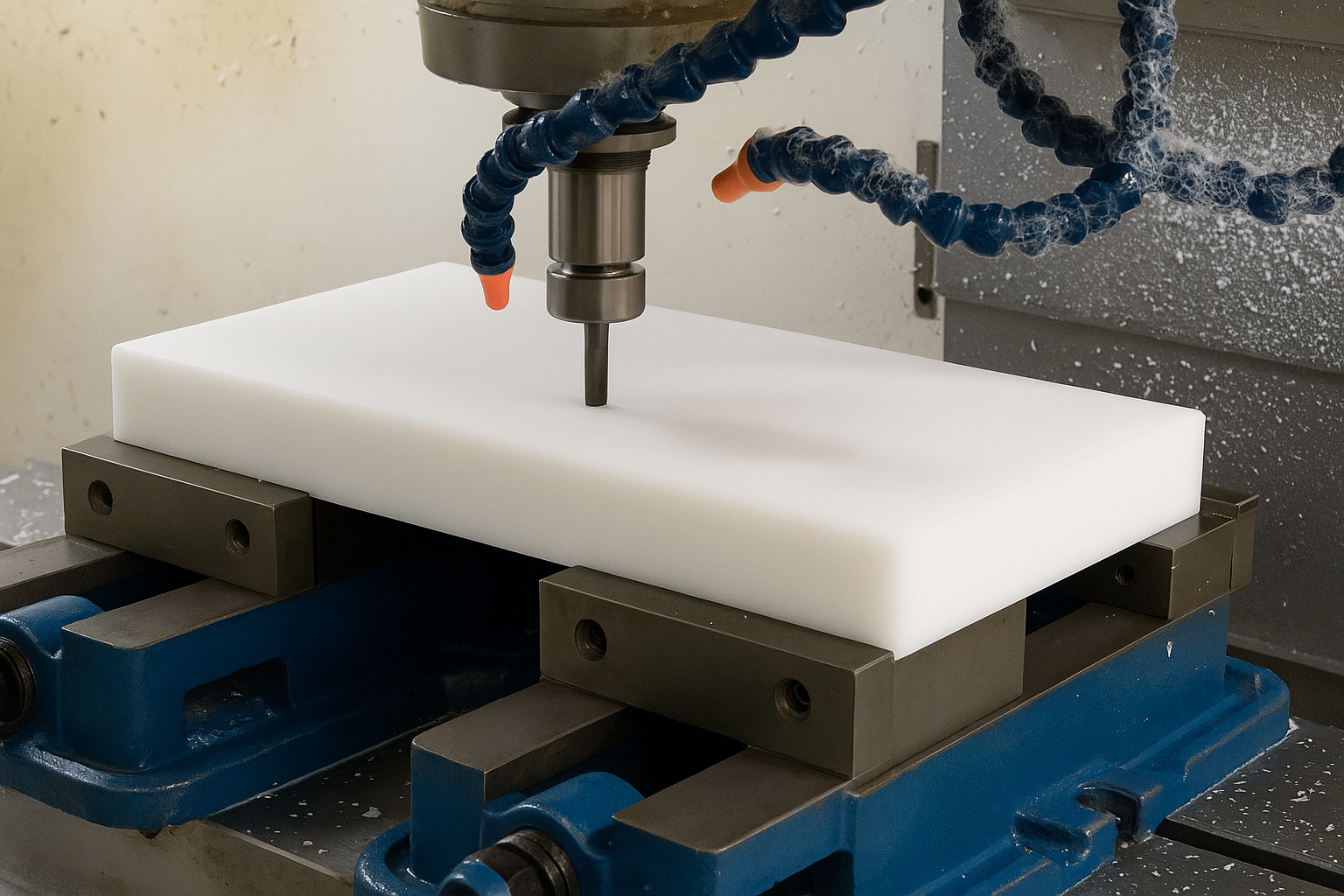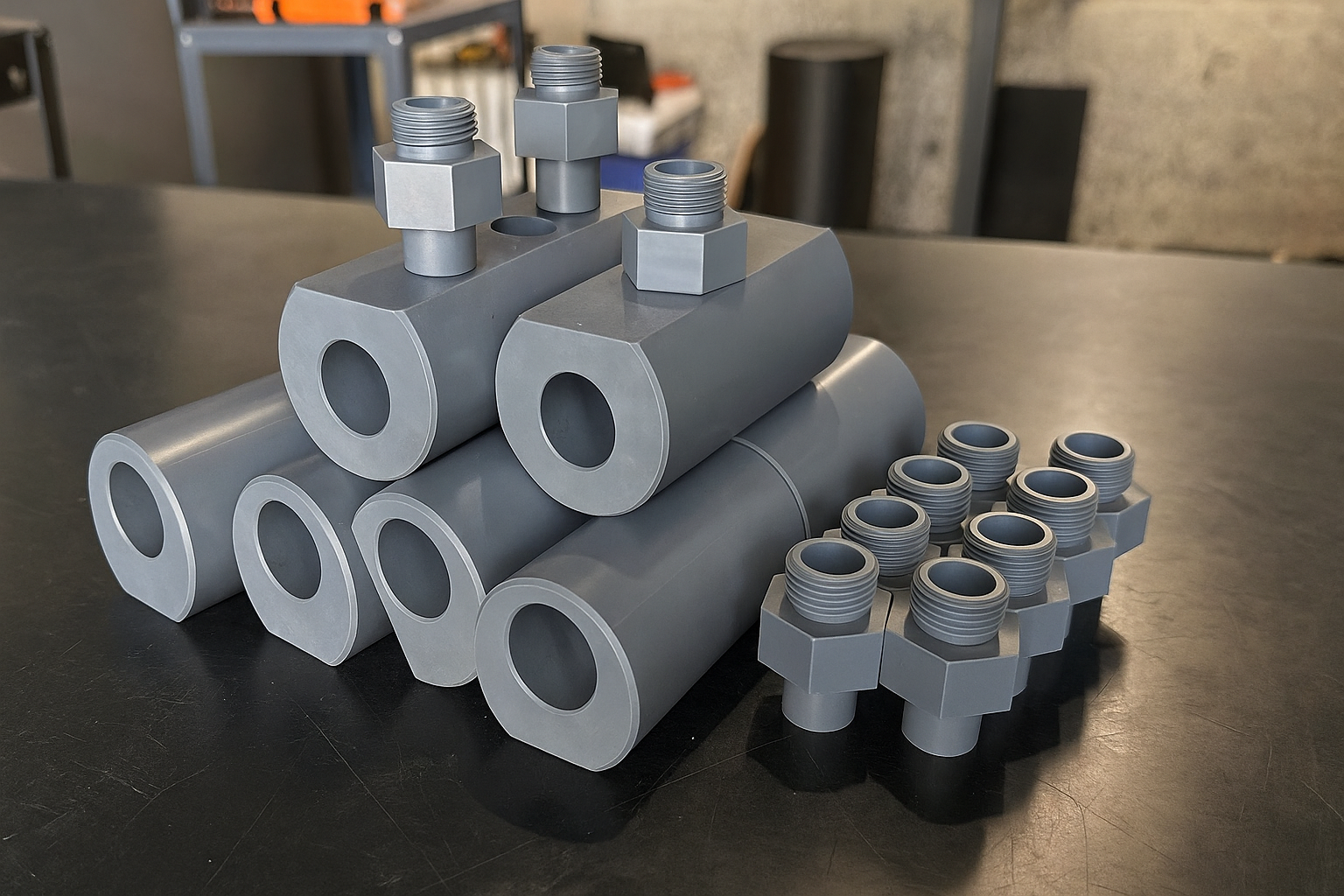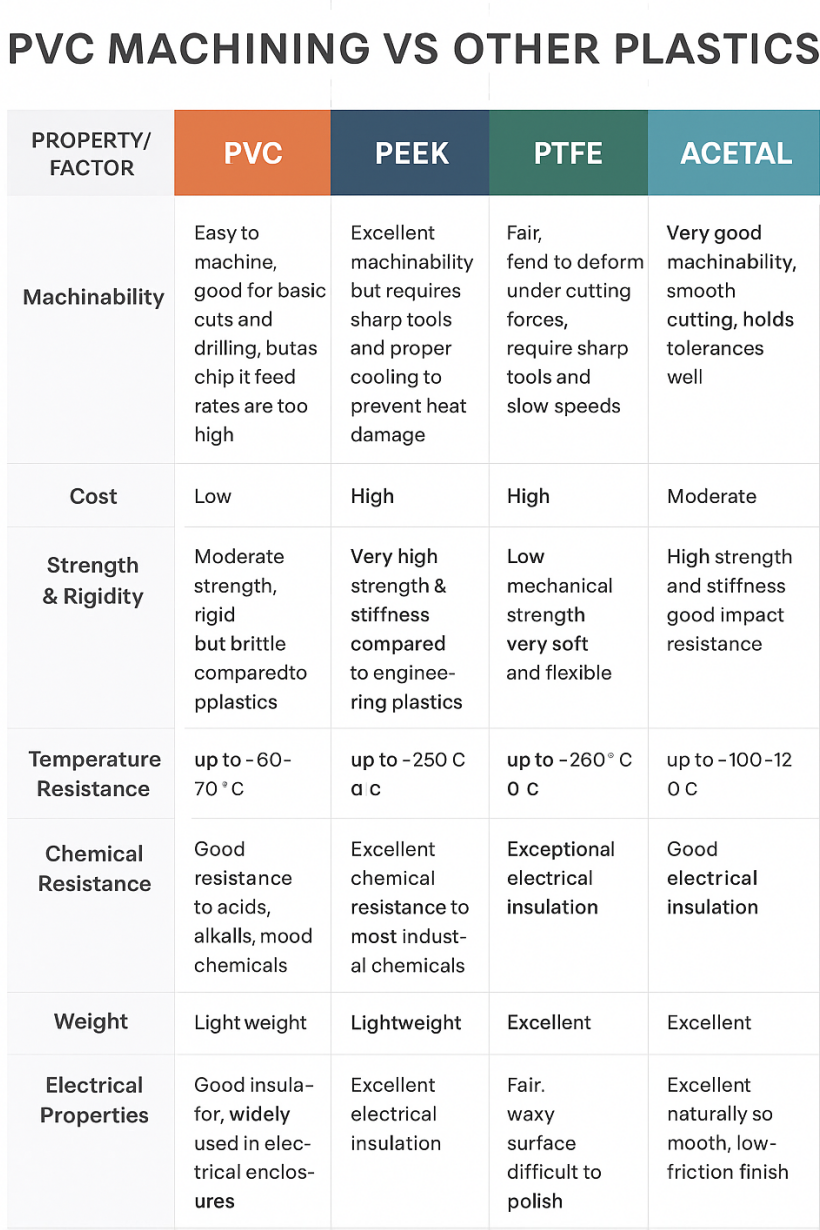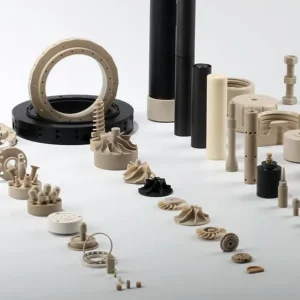When people hear “PVC,” most think of white plumbing pipes at the hardware store. Ma Cloruro di polivinile is far more versatile than that — and in the machining world, it’s a reliable, high-performance plastic that’s easy to work with and surprisingly tough.
Whether you’re building components for water systems, parti elettriche, apparecchiature per il trattamento chimico, o anche dispositivi medici, PVC is worth a closer look. In questa guida, we’ll walk through its properties, applicazioni, machining tips, and how to get the best results.
What Is PVC?
PVC stands for Cloruro di polivinile — a type of plastic that’s surprisingly tough, conveniente, and incredibly versatile. If you’ve ever seen white plumbing pipes, electrical cable insulation, or even certain window frames, chances are you’ve seen PVC in action.
It’s made by combining vinyl chloride monomers into long chains, creating a strong yet lightweight material. One of the biggest reasons PVC is so popular is that it’s resistant to water, sostanze chimiche, and sunlight — meaning it doesn’t easily rust, corrode, or degrade.
PVC comes in two main types:
PVC rigido (UPVC) – hard, forte, and used in things like pipes, Materiali da costruzione, e frame delle finestre.
PVC flessibile – made softer by adding plasticizers, perfect for things like hoses, isolamento via cavo, and flooring.
Key Properties of PVC
Here’s why PVC is so popular in machining and manufacturing:
| Proprietà | Benefit in Real-World Use |
| Resistenza alla corrosione | Great for chemical plants, marino, and outdoor use |
| Resistenza chimica | Handles acids, basi, and salts without degrading |
| Assorbimento di umidità a basso | Maintains shape and stability in humid or wet conditions |
| High dielectric strength | Excellent for insulating electrical components |
| Flame retardancy | Naturally self-extinguishing |
| Resistenza all'abrasione | Long-lasting in moving or abrasive environments |
| Lightweight but strong | Easier handling and lower transport costs |
Material Snapshot – PVC Gray Type 1
Densità: ~1.38 g/cm³
Resistenza alla trazione: ~7,000 psi
Operating temperature: up to ~60°C (140°F) continuous
Good machinability with standard CNC tools
Where PVC Is Used ?
Here are some of the most common places you’ll find PVC:
Pipes and Plumbing – Probably the most famous use of PVC. Those white or gray pipes under sinks or in construction sites? Yep, that’s PVC, chosen for its resistance to corrosion and chemicals.
Electrical Cable Insulation – PVC keeps wires safe from moisture, Calore, and damage, making it a favorite in both homes and industrial settings.
Building Materials – Think window frames, rivestimento, roofing membranes, and even flooring. It’s strong enough to handle the elements.
Attrezzature mediche – Flexible PVC is used in things like IV tubes, blood bags, and oxygen masks because it’s safe, leggero, and easy to sterilize.
Beni di consumo – From inflatable pool toys to credit cards, PVC sneaks into all sorts of products thanks to its versatility.
Key Techniques for Machining PVC
| Tecnica | Come funziona | Why It Matters for PVC | Suggerimento professionale |
| Use Sharp Cutting Tools | Choose carbide or HSS tools with a sharp edge. | PVC is soft enough to cut easily, but dull tools can crush it instead of slicing it. | Resharpen tools regularly to avoid rough edges. |
| Keep Speeds Moderate | Avoid extremely high spindle speeds. | High speed creates friction, which can heat up and melt PVC. | Aim for medium speeds and adjust feed rate to keep the chips flowing. |
| Support the Workpiece Well | Use clamps, apparire, or fixtures to hold PVC securely. | PVC can vibrate or move under pressure, which can ruin accuracy. | Use soft jaws or padding to avoid clamp marks. |
| Prevenire il surriscaldamento | Use air cooling or mist coolant. | Too much heat can cause PVC to warp or discolor. | Even a simple fan or compressed air can help. |
| Go for Light Passes | Take smaller depth cuts instead of removing too much at once. | Reduces tool pressure and avoids cracking or chipping. | Multiple light passes often produce a better finish. |
| Use the Right Drill Bits | Choose bits with a steeper point angle (60–90°). | This prevents the bit from grabbing and splitting the PVC. | Back the drill out occasionally to clear chips. |
| Finish with Sanding or Deburring | Lightly sand or scrape edges after machining. | Gives a smooth, sicuro, and professional finish. | Use fine-grit sandpaper for best results. |
Avoiding Contamination
One often-overlooked problem with machining plastics like PVC is cross-contamination. If a facility machines both metals and plastics in the same area, tiny metal particles can embed into PVC surfaces — leading to stress cracking or warping over time.
Soluzione: Use a dedicated plastic machining setup or work with a shop (like AIP) that specializes in all-plastic machining environments.
PVC Machining VS Other Plastics
Considerazioni finali
PVC is a workhorse material: conveniente, forte, and easy to machine when handled properly. If you anneal it, use sharp tools, keep your feeds and speeds reasonable, and protect it from contamination, you can produce precise, long-lasting parts for a wide range of applications.
For engineers and designers, the combination of resistenza chimica, isolamento elettrico, e versatilità makes PVC a smart choice for both prototypes and production.
Per saperne di più:

